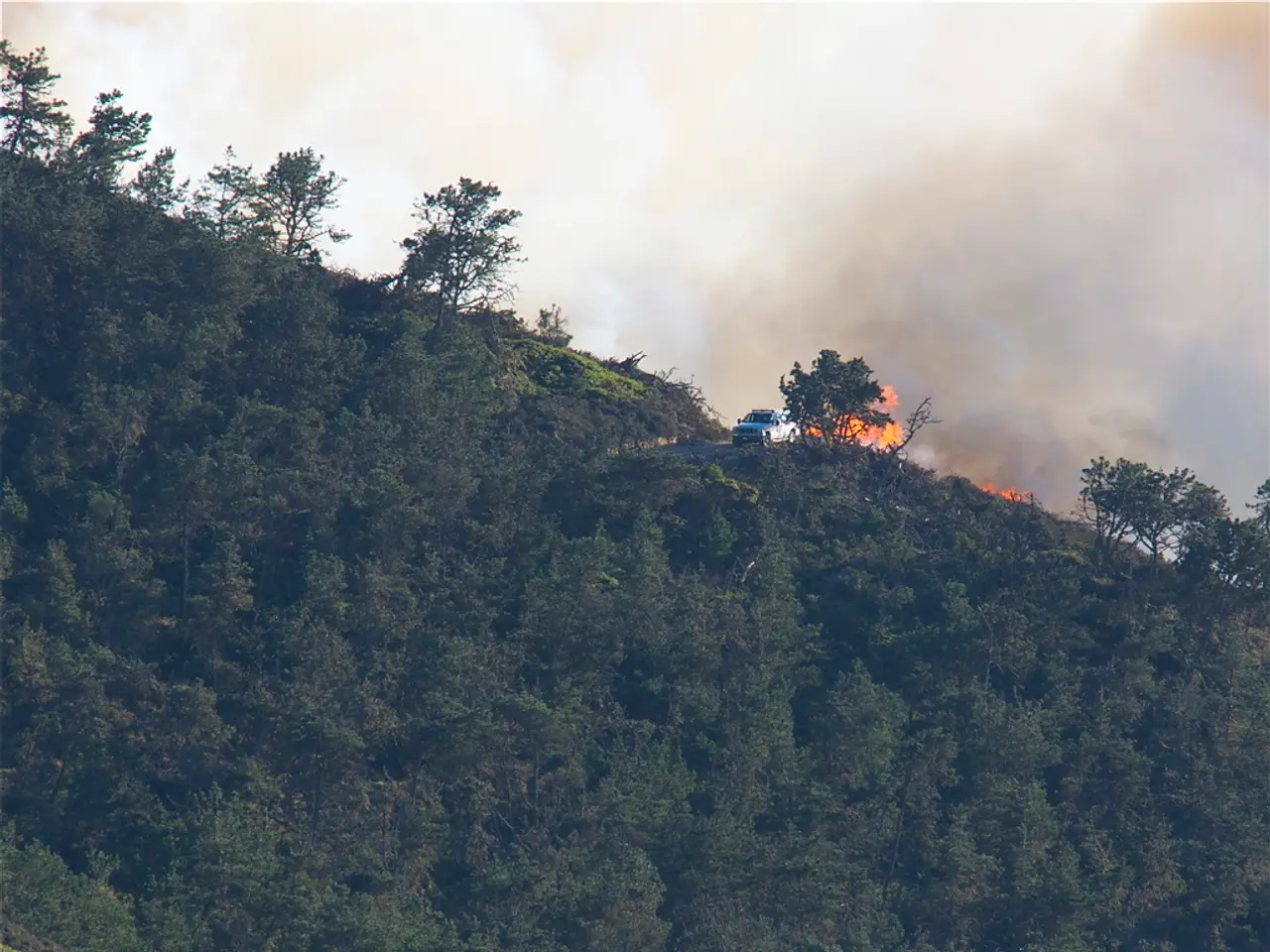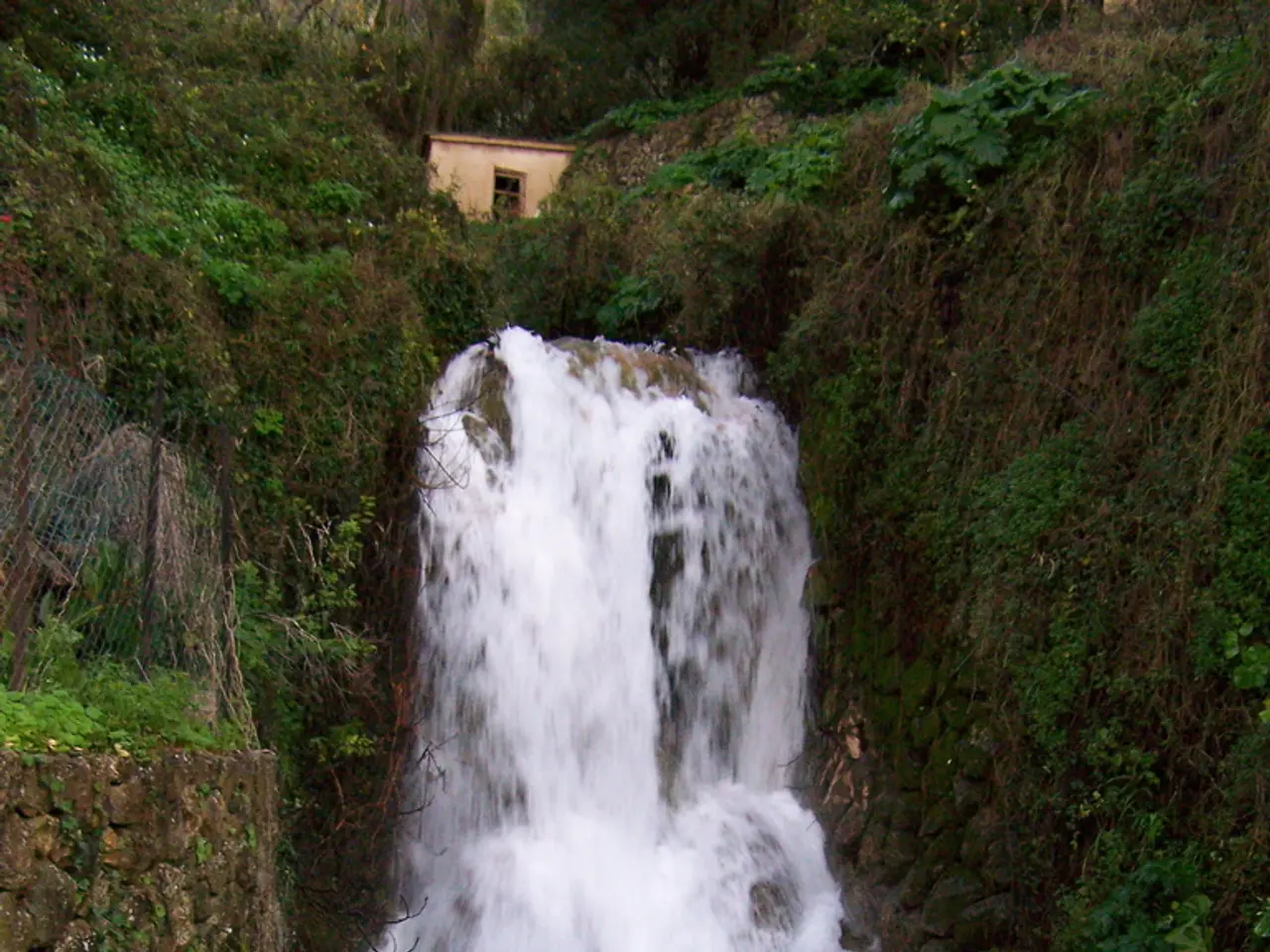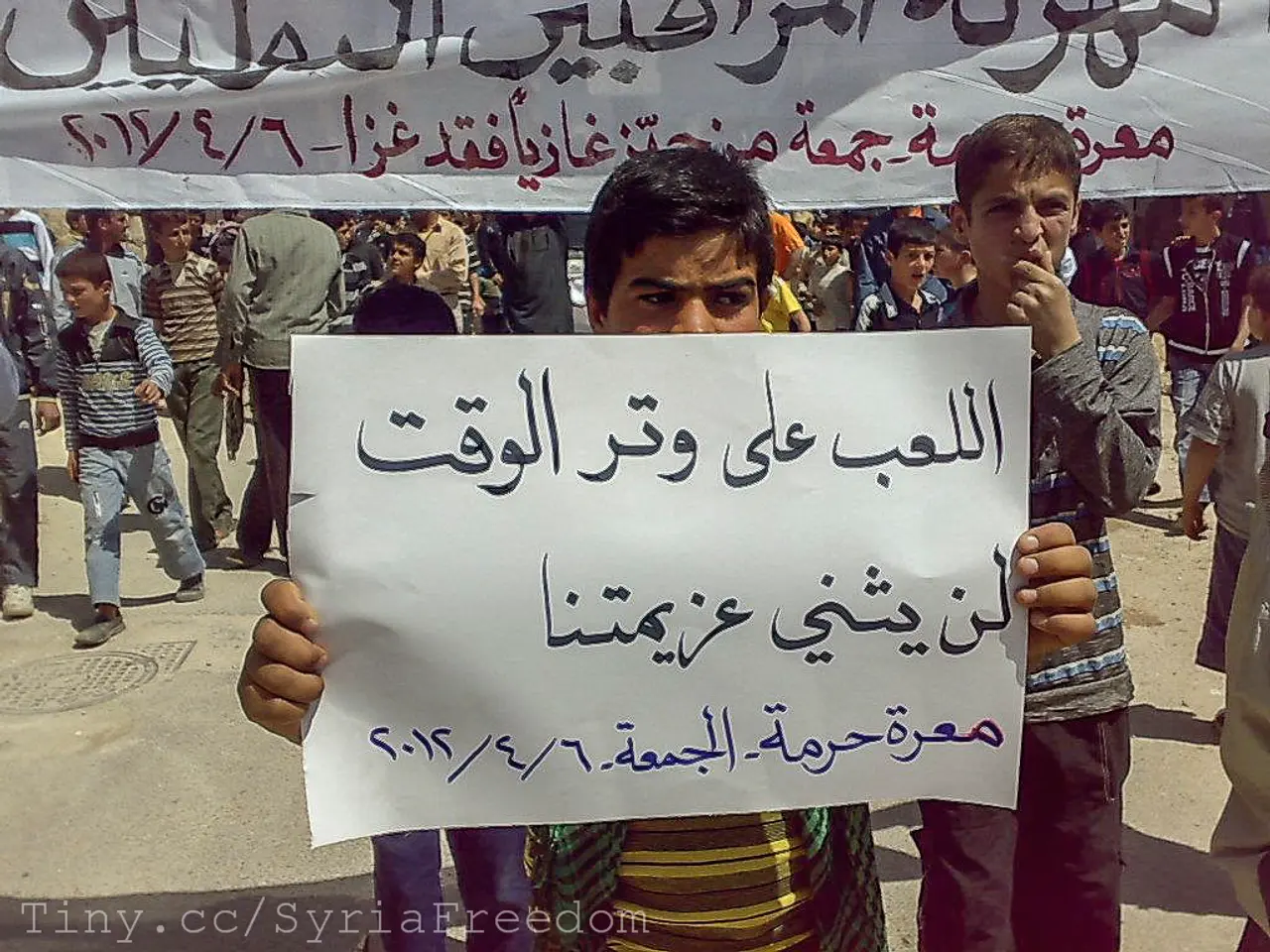Forest fires pose a heightened risk, prompting our institution to urge extreme vigilance in the wooded areas.
In light of the heightened wildfire risk, Germany has enacted a series of stringent safety rules and precautions to minimise the risks and protect the population. This comes as the German Weather Service classifies the wildfire risk as high on June 29, 2025, due to the anticipated hot and dry conditions.
During periods of high wildfire danger, such as the current level 4 rating, evacuation orders may be issued for villages and nearby residential areas at risk. For instance, during recent wildfires in eastern Germany, villages like Heidehäuser and Neudorf were evacuated, with residents advised to take only essentials such as identification and cash.
Mobile phone alerts are used to notify residents swiftly about evacuations and safety measures. People are also advised to cover their mouth and nose with improvised respiratory protection, such as cloth, a piece of clothing, or a surgical mask, to reduce smoke inhalation. Travel restrictions are often recommended, urging people to avoid wildfire-affected regions to prevent hindering firefighting efforts and reduce exposure to dangerous conditions.
On the operational side, firefighters are heavily deployed, often numbering in the hundreds or thousands, to contain the blazes. Special equipment like police helicopters with infrared cameras is employed to detect embers and hotspots. Because some wildfires occur in hazardous areas such as former military training grounds, firefighters exercise additional caution due to risks like unexploded ammunition.
At the European level, Germany participates in prevention and preparedness programs that include prepositioning firefighters in high-risk zones, readying firefighting aircraft and ground teams, and deploying wildfire support teams for coordination and monitoring from June through September—the peak wildfire season. The overarching strategy follows an Integrated Fire Management approach, combining prevention, early detection, rapid response, and post-fire adaptation to reduce wildfire impact effectively.
In addition to these measures, several local rules are in place. During high local fire danger, even fires at official fireplaces may be prohibited—check signs at the respective locations. Fires are only permitted at official, permanently established fireplaces on designated grilling areas. It is mandatory to supervise fires and ensure they are completely extinguished before leaving, even at permitted grilling sites. Open fires outside the forest must be at least 100 meters away from the forest edge. Bringing and using grilling devices in the forest is not allowed.
The lack of rainfall and high temperatures have led to dry vegetation, making twigs, leaves, and undergrowth particularly flammable. Careless handling of hot or ignitable sources could start wildfires. The city is urging all forest visitors to exercise extreme caution.
Sources: [1] Deutsche Welle, 2021. Germany issues evacuation orders as wildfires rage. [Online]. Available: https://www.dw.com/en/germany-issues-evacuation-orders-as-wildfires-rage/a-59037547 [2] European Forest Institute, 2020. Wildfire prevention and preparedness in Europe. [Online]. Available: https://www.efi.int/publications/policy-briefs/wildfire-prevention-and-preparedness-europe [3] Bundesanstalt für Immobilienaufgaben, 2021. Wildfires: Prevention and response. [Online]. Available: https://www.bim.bund.de/EN/Themen/Umwelt/Lebensraum/Natur/Wildfeuer/wildfeuer_node.html [4] Federal Ministry for the Environment, Nature Conservation and Nuclear Safety, 2021. Integrated Fire Management. [Online]. Available: https://www.bmu.de/en/topics/climate-and-energy/nature-and-biodiversity/forests/integrated-fire-management/2105368/
- As the wildfire risk continues to be high, scientists in environmental-science and weather-forecasting are closely monitoring climate-change patterns to predict future outbreaks and develop prevention strategies.
- With wildfire seasons becoming more frequent and intense, Germany has collaborated with other European countries in environmental-science research to seek long-term solutions for mitigating climate-change's impact on weather patterns and wildfire risk.
- One positive outcome from the increased wildfire activity is the growth in research and development of innovative methods for weather-forecasting and climate-change modeling within the scientific community, benefiting not only Germany but the entire world.








